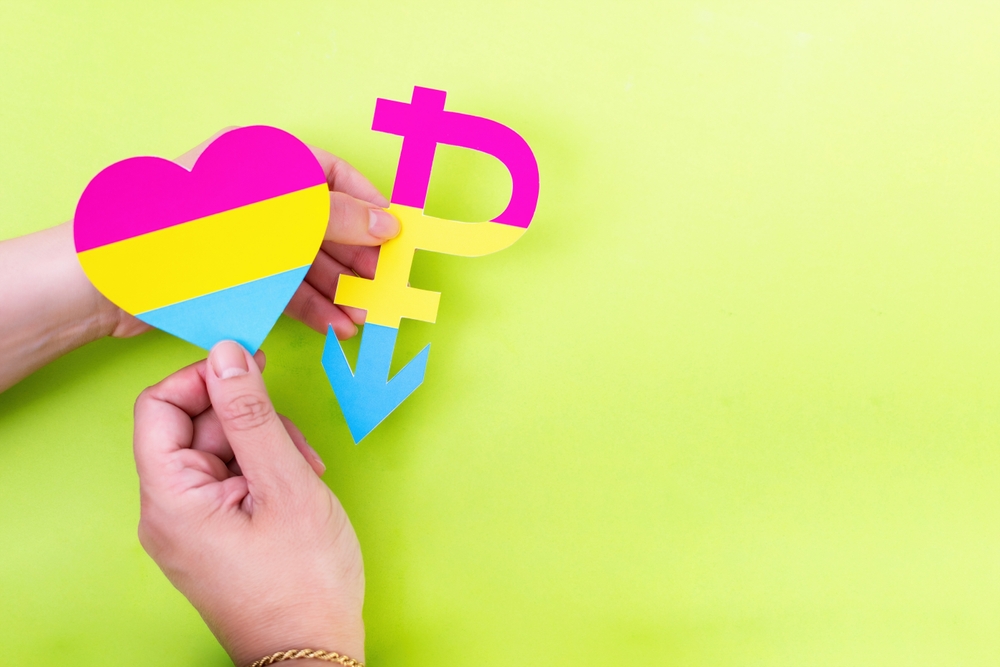What Is Pansexuality and What Should You Know About It?

As the visibility of LGBTQ+ people has increased in society, so has our awareness of lesser-known sexual, romantic, and gender identities. Among these are pansexuality. Someone who experiences attraction to others regardless of their gender or sex is pansexual. Based on the Greek root pan, which means “all,” pansexual is sometimes used interchangeably with other terms such as bisexual. This leads to many discussions as to what the term does and doesn’t mean. Let’s take a closer look at the concept of pansexuality and what is meant when someone says that he, she, or they are “pan.”
How Does It Compare to Bisexuality?
Because of the root word bi in “bisexuality,” the term is often used to describe someone who is attracted to both men and women. This does not necessarily account for attraction to those who are nonbinary, genderfluid, or multiple genders. For some people, the terms bisexual and pansexual are interchangeable, accounting for more nuanced definitions where a bi person is attracted to multiple genders and a pan person is attracted to all genders. Because of this, some consider pansexuality to fall under the larger umbrella of bisexuality. For others, terms like pansexual, polysexual, or omnisexual are more inclusive and better describe their sexual, romantic, or emotional attraction.
Can Pansexuality Be Considered Transphobic?
Some critics have argued that pansexuality may be transphobic, thinking that an attraction to all genders somehow excludes trans individuals. It’s important to remember that pansexual attraction exists regardless of gender. This means someone who is pan could find a trans man or woman attractive. Although gender identity and sexual orientation are different, being pansexual doesn’t exclude an attraction to others on the basis of gender, gender expression, or even sex organs.
Are Pansexuals Oversexed or Hypersexual?
Pansexual people are sometimes criticized and incorrectly seen as having excessive libidos due to being “attracted to everyone”. This view is harmful and is similar to the homophobic and biphobic notions that non-heterosexual orientations are prone to infidelity. Sexual drive is a different concept from orientation and is neither here nor there when it comes to who someone loves. Those who identify as pan aren’t in constant pursuit of physical or romantic connections with others. Pansexuality should not be confused with polyamory, which is having multiple sexual or romantic relationships. Pan people can be in loving, monogamous relationships, including marriages.
Are Pansexual People Confused?
One harmful misconception of pan individuals is that they cannot make up their minds about who they love. Another similar misconception is that a pan person hasn’t come to grips with the idea that they’re actually gay. Pansexuality is a valid and authentic orientation. Those who consider themselves pan know who they are. They’re free to define their sexuality as they see it, without centering an attraction to a specific gender over the other. For some people, their attraction to others isn’t based on one particular thing or set of characteristics. Attraction can even vary from person to person, so being pansexual is the best way for some people to describe the way they love.
Is Pansexuality Just the Latest Craze?
Although the term “pansexual” emerged in the 1990s, the concept has been around far longer. The word has been in the Oxford Dictionary since the early 1900s. As our understanding of sex and gender involves, so do the words we use to capture and define concepts. Even if it was a brand-new term, it wouldn’t invalidate the concept of being attracted to someone regardless of their sexual or gender identity.
How society describes sexuality and various types of attraction (or lack thereof) will continue to evolve. Pansexuality is a real part of the spectrum of human sexuality. While the concept may be difficult to grasp for some, our pansexual siblings are deserving of respect and support.














